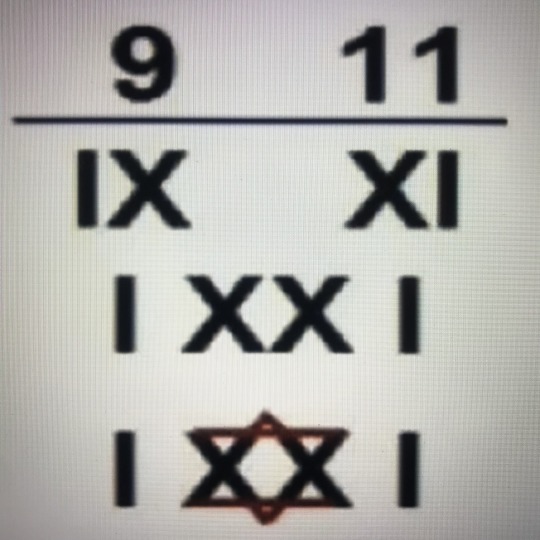#hexagram
Text

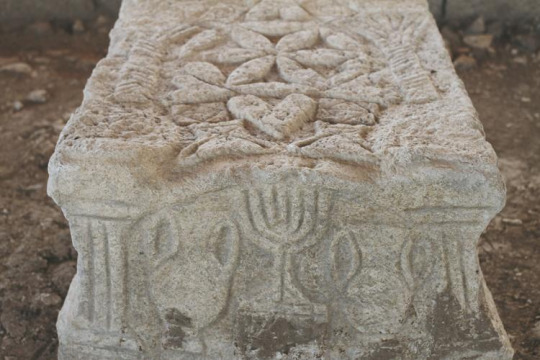


The Magdala Stone with Hexafoil and Menorah
Magdala, Israel / Judea
c. 70 CE
#magdala stone#hexagram#geometry#star rose#menorah#design#flower of life#judaism#jewish#hexafoil#hebrew
146 notes
·
View notes
Photo
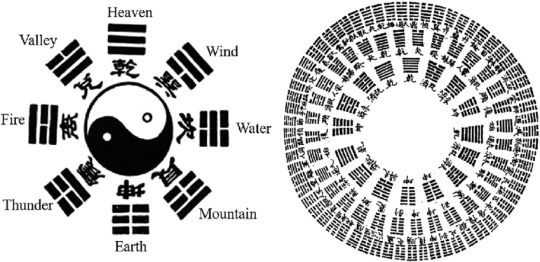
Daoist nuclear trigram and hexagram models (Zhuangzi, Peirce, and the butterfly dreamscape: concentric meaning in the Qiwulun 齊物論, Jamin Pelkey, Toronto Metropolitan University)
229 notes
·
View notes
Text

Genesis of pentagram and hexagram
#magick#symbols#occult#pentagram#hexagram#upload#art#occultism#witchcraft#symbolism#illustration#on witchcraft
72 notes
·
View notes
Text
How to Consult the I Ching

Divination is the art of seeing and interpreting signs in everything around us. The goal of divination is to encourage well-being by helping a person live in harmony with the universe around them. One of the best known systems of divination is the I Ching, or Book of Changes. For some 3,000 years, people have turned to the I Ching to help them uncover the meaning of their experience and to bring their actions into harmony with their underlying purpose. The I Ching consists of 64 hexagrams or six-line diagrams. Each hexagram is accompanied by a text containing folk poetry, historical tales, and commentary. These ancient texts describe the conditions associated with the 64 archetypal patterns of change. They convey the laws and principles pertaining to time and change. The hexagram images reveal the patterns through which change manifests itself in the ebb and flow of time.
The underlying premise of the I Ching is that all events--past, present, and future are interconnected. The future develops out of the present according to a set of fixed laws. To know the present, then, is to know the future. The I Ching counsels timely action in the moment for a given set of circumstances. Each moment has a pattern to it and everything that happens in that moment is interconnected. As a system of divination, the I Ching reflects your current connection with the Tao, or Universe. It serves to freeze the present moment at the time of your inquiry, responding in the form of a hexagram. By evaluating the hexagram that describes your current pattern of relationship, you can divine the outcome and act accordingly.
The I Ching is a microcosm of all possible human situations. It serves as a dynamic map, whose function is to reveal one's relative position in the cosmos of events. The hexagram texts address the sixty-four archetypal human situations. The commentary of each hexagram reveals the optimal strategy for integrating or harmonizing with the inevitable for a given condition. It provides the appropriate response to your inquiry. It affords a holistic perspective of your current condition and discusses the proper or correct way to address the situation.
The Inquiry
To consult the I Ching, one must first frame an inquiry. Formulating an appropriate question and writing it down is a key element in the process of divination. Focusing on a question develops a receptive state of mind and helps you clarify what it is you are truly seeking. It is important to word your inquiry in a concise and clear-cut manner. A vague question will elicit an ambiguous or misleading response. Be specific about your intent, the circumstances, and the scope or nature of the response you desire.
Avoid the tendency to ask yes/no or either/or types of questions. A simple yes or no question leaves no room for elaboration and the either/or inquiry is actually two questions. Inquire instead about the nature of the situation, the appropriate attitude and strategy, the outcome of a particular course of action, and so forth. If time is a factor, include this element in your inquiry as well. Appropriate inquiries might be worded as follows:
How would it benefit me to pursue a career in _____?
What aspect of my character or attitude is hindering my progress?
Which hexagram best describes my present situation?
I would like the I Ching to comment on my intent to travel to _____ in three months?
Casting a Hexagram
Once you have formulated an appropriate inquiry, you are ready to "cast a hexagram." Casting a hexagram is the term used to describe the method for generating the six lines of the hexagram. Casting was devised in ancient China as a mechanism for reflecting or mirroring what the subconscious or inner self already knows. The subconscious mind, or right hemisphere of the brain, knows which hexagram best describes your current situation or condition. It knows because it accesses the invisible sea of information that we bathe in daily--the all-pervading frequencies of consciousness immanent in all phenomena. The subconscious has the capacity to analyze or devour information all at once while the conscious mind, or left cerebral, analyzes information one bit at a time. The conscious mind allows us to see only the surface of things. Accessing the all knowing of the subconscious is difficult since there is usually little or no communication between the left and right cerebrals.
Various casting methods were devised to resolve this predicament. The subconscious mind is able to gather the information desired and influence the casting, regardless of the method, to indicate the most appropriate hexagram. The original method for casting a hexagram is known as the "yarrow oracle." This method involves the manipulation of fifty yarrow stalks in an elaborate procedure that is repeated six times in order to determine the six lines of the hexagram. A simple "coin oracle" was devised by Chinese philosopher Kuei Kuo Tze some 2500 years ago to replace the complex yarrow stalk method. The coin method requires tossing three coins six times to generate each line of the hexagram. Like a building, the hexagram is assembled from the ground up--the bottom line being considered the first line in the text interpretations.
The easiest way of casting a hexagram is to use my online hexagram generator which is based on the yarrow stalk method. The result is the immediacy of the coin tossing method with the reliability of the yarrow stalk method. For a reading, click on the "Cast a Hexagram" button. A small window will appear. Click the "Create Hexagram(s)" button to generate the hexagrams. Red indicates a changing line. A hexagram with one or more changing lines indicates that the situation related to your inquiry will soon be changing. The changing lines will turn into their counterparts, transforming the initial hexagram into a changed hexagram. As a result, you will read two hexagrams. The initial hexagram corresponding to your present situation is read first, followed by the changed hexagram relating to the eventual development. Changing lines usually address the future implications of a particular course of action. They may describe the changes you are likely to experience and how to deal with them.
Interpreting the Message
The I Ching does not answer a question in a direct, logical manner. It responds in the form of a hexagram, which serves as a model or paradigm of appropriate behavior. It provides the framework within which to perceive and comprehend the archetypal condition related to your query. It provides a holistic perspective and comments on the situation or condition. It offers suggestions on the best way to approach this condition. It presents advice for what to do to act in accord with or avoid a particular prediction. You must then interpret the message and determine for yourself the most appropriate course of action with regard to your inquiry. This process engages and accesses the subjective mind and intuitive awareness.
When your interpretation differs from the eventual outcome, then reevaluate the commentary in light of what actually transpired. In this way, you develop proficiency in your ability to interpret the I Ching's sometimes paradoxical and enigmatic aphorisms. At times, the oracle will provide an incomprehensible response that does not seem to fit the question posed. When this occurs, the I Ching may be overriding your stated inquiry in order to address a more significant issue, an unstated concern, or unconscious projection. The oracle may also be alerting you to an impending crisis or significant change. Keep in mind, too, that all conditions are transitory. Nothing is permanently fixed or static, so whether you like or dislike the response, conditions will eventually change with regard to your inquiry. Consult the I Ching.
#i ching#shamanism#tao te ching#divination#shamanic drumming#free readings#spirituality#oracle#hexagram
9 notes
·
View notes
Text
this message is for you 🖤
for you, the i ching gives me hexagram 22 and hexagram 7. beauty and small taming.
while it feels like others may not see you— as oftentimes their depictions of you seem to fall short of the multifaceted being you are— beauty is in the eye of the beholder. it’s impossible to capture every aspect that makes you you and impossible to expect someone to try. their inability to see or flawlessly capture all of you is inevitable. you must not forget that validation must come from within first. cultivate your understanding of yourself and then you will begin to see what you already know in others’ expressions of you. this external validation should feel like sprinkles and whipped cream on ice cream. not necessary, but it just makes the whole thing— here, your security in yourself— so much sweeter.
how can you cultivate this now? what self-loving act can you do today?
#i ching#channeled message#collective reading#messages from the i ching#hexagram#🫧 the oracle’s queue#🚪 the oracle next door#this message is for you 🖤#card reading
15 notes
·
View notes
Text

The sun looked so beautiful coming through the stained-glass suncatcher I made. Thank you to my friend for teaching me to make one and for the glass to do it. I still look at this often and enjoy how beautiful it is.
36 notes
·
View notes
Text
Adapting itself to obstacles and bending around them, wood in the earth grows upward without haste and without rest. Thus too the superior man is devoted in character and never pauses in his progress.
— Hexagram #46 from the I Ching · Pushing Upward · via Ask The Oracle
#i ching#hexagram#divination#wisdom#oracle#book of changes#quote#quotes#life quotes#adaptation#obstacles#wood#earth#pushing upward#patience#perseverance#character#devotion#progress#self development#self improvement#self realization#self actualization
21 notes
·
View notes
Text
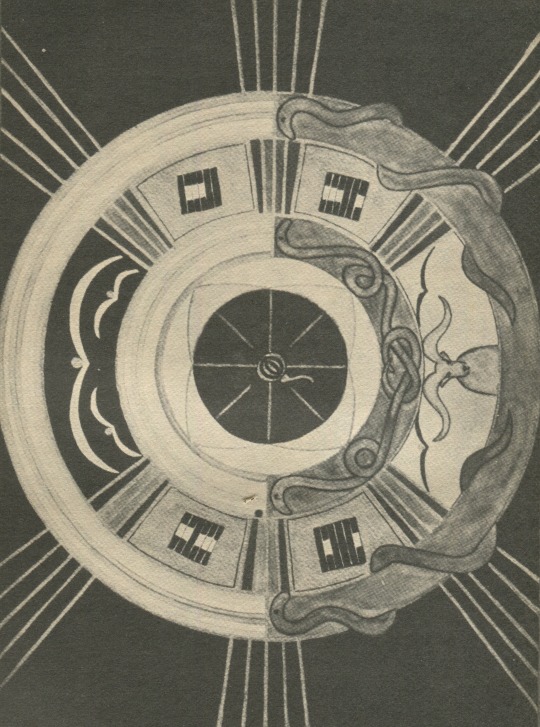
♀ Symbol of the air-world and the earth-world (Birds and serpents.) In the centre a flower with a golden star.
The Secret of the Golden Flower: A Chinese Book of Life 太乙金華宗旨, translated and explained by Richard Wilhelm with a commentary by C.G. Jung (New York: Harcourt, Brace and World, Inc. 1931/1962)
20 notes
·
View notes
Photo

Agnieszka Skatuła — Hexagram (oil on board, 2020)
106 notes
·
View notes
Text
Hey @kerfthecaptain I made hexagram again
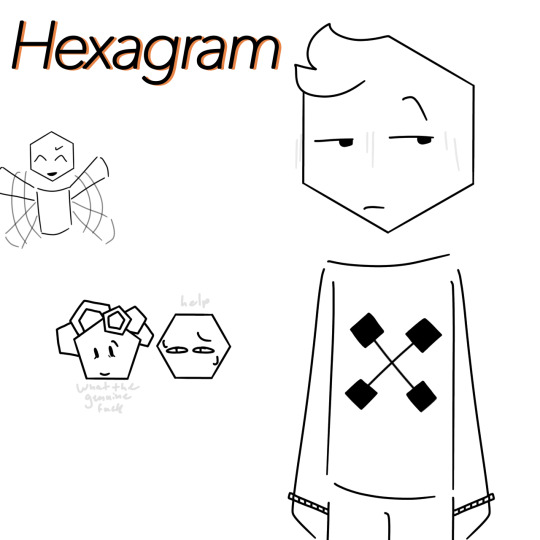
ignore the second little drawing lmao
but anyways
pjs :3
and no hat either lolz
oh my god he isn’t bald??? oh my god who knew /hj
#Mist’s art#The pink corruption#tpc#pink corruption#hexagram#hexagram tpc#tpc hexagram#the silly!!!!!
8 notes
·
View notes
Text
“when small men multiply and increase in power, the necessity of the time requires superior men to withdraw before them.”
- king wan
#human design#philosophy#i ching#aquarius#divinity#humanity#metaphysical#pluto in aquarius#intuition#astrology#hd community#hexagram#mystical#magic#divination#divine feminine
4 notes
·
View notes
Text

Golden necklace with pendants bearing a six-pointed star and seven dots.
Tomb of the Lord of Capridi of Ebla
Aleppo, Syria
c. 1700 BCE
#jewelry#necklace#pendant#star#hexagram#seven dots#aleppo#syria#syrian#geometry#medallion#symbol#syrian costume#eblaite costume#six pointed star
6 notes
·
View notes
Text
A superior person achieves victory in the same fashion as a superior army: by putting his inferior emotions under the guidance of his superior emotions, and by proceeding cautiously, modestly, and with the continual goal of achieving peace and detachment. -Hexagram 7, Shih
10 notes
·
View notes
Text
Never get tired of the scream at 1:36

17 notes
·
View notes
